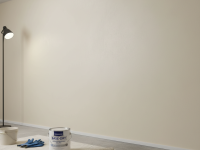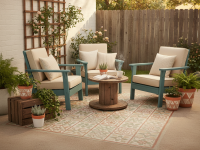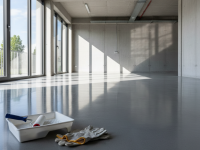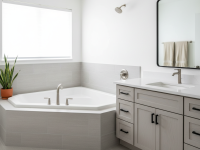Ever walked into your home and felt that tell-tale stickiness in the air, or maybe caught a whiff of something a bit musty? Or perhaps your skin feels perpetually dry, and static electricity is your constant companion? Chances are, your home’s humidity levels are out of whack. We often jump straight to thinking about buying an expensive, energy-guzzling dehumidifier, but what if I told you there are numerous natural, effective, and often beautiful ways to achieve that perfect indoor air balance?
As someone who’s spent years experimenting with creating the most comfortable and healthy living environment possible (and not wanting to break the bank or constantly ruoisy appliances!), I’ve discovered a treasure trove of simple yet powerful strategies. This isn’t just about comfort; it’s about protecting your home from mold and mildew, safeguarding your health, and even preserving your furniture. Ready to breathe easier and feel better without plugging in a single extra device? Let’s dive in!
Understanding Your Humidity (And Why It Matters So Much)
Before we start “fixing” anything, it’s crucial to understand what healthy humidity looks like. Ideally, your indoor relative humidity should hover between 30% and 50%—some experts even extend that to 60%. Anything above 60% provides a perfect breeding ground for dust mites, mold, and mildew, leading to allergies, respiratory issues, and even structural damage to your home. Think warped wood floors, peeling paint, and that unmistakable musty smell.
On the flip side, humidity levels below 30% can be just as problematic. Low humidity dries out your nasal passages, making you more susceptible to colds and flu. It can also cause dry, itchy skin, static electricity, and even crack wooden furniture and musical instruments. So, our goal isn’t just to reduce humidity; it’s to find that sweet spot for optimal comfort and health. The first step? Get yourself a hygrometer. They’re inexpensive devices that instantly tell you your home’s humidity level, giving you the data you need to target your efforts.
Ventilation: Your Home’s Natural Breathing System
This is arguably the most powerful (and often overlooked) tool in your natural humidity-balancing arsenal. Think of your home as needing to breathe, just like you do!
Open Windows and Doors
It sounds ridiculously simple, right? But controlled ventilation is key. On days when the outdoor humidity is lower than indoors, opening windows and doors for even 10-15 minutes can make a world of difference. This allows moist, stale air to escape and fresh, drier air to enter. My personal tip? Do this in the morning or evening when outside temperatures are cooler, as bringing hot, humid air in during peak summer will only make things worse.
Utilize Exhaust Fans Religiously
Bathrooms and kitchens are notorious humidity hotspots. A hot shower or boiling a pot of pasta can skyrocket indoor humidity. Make it a habit to always turn on your bathroom exhaust fan before showering and leave it ruing for at least 15-20 minutes afterward. In the kitchen, always use your range hood when cooking, especially when boiling, simmering, or frying. These fans are specifically designed to vent moisture-laden air directly outside.
Promote Cross-Ventilation
If you have windows on opposite sides of your home, open them strategically to create a natural airflow. This cross-breeze can efficiently flush out humid air from one side and draw in drier air from the other, creating a pleasant and effective air exchange.
The Green Solution: Plants That Help (And Some That Don’t)
Plants are more than just pretty decor; some are fantastic natural humidity regulators. However, you need to choose wisely!
Moisture-Absorbing Plants for High Humidity
If you’re battling high humidity, certain plants can actually help. They absorb moisture from the air through their leaves, which is then used in their transpiration process. Some of my favorites include:
- Peace Lily: Elegant and effective, it loves humid environments and can pull moisture from the air.
- Boston Fern: Another humidity-loving plant that does a great job of absorbing airborne moisture.
- English Ivy: Not just for outdoors, this plant is known for its ability to absorb mold spores and moisture.
- Reed Palm: A beautiful, larger plant that transpires water and can help regulate overall humidity.
Remember, don’t overwater these plants! Saturated soil can add to humidity, defeating the purpose. Let the topsoil dry out between waterings.
Plants That Add Humidity (Use with Caution if Your Goal is to Reduce)
Conversely, if your goal is to reduce humidity, be mindful of plants like spider plants or Areca palms that release a lot of moisture through transpiration. While great for dry climates, they might not be your best friends in a naturally humid home.
Smart Home Practices and Strategic Material Choices
Many of our daily routines contribute to indoor humidity. A few adjustments can make a significant difference.
Drying Laundry Smartly
Air drying laundry indoors, especially large loads, can release a surprising amount of moisture into your home. If possible, dry clothes outdoors on a line. If you must dry indoors, place your drying rack in a well-ventilated area, perhaps near an open window or with a fan ruing to help circulate air and prevent moisture from settling.
Cook with Lids and Use Your Range Hood
This simple act can dramatically reduce the amount of steam released into your kitchen. Lids trap steam, and combined with your range hood, you’ll be amazed at the difference. Also, consider using a slow cooker or instant pot more often, as they tend to release less moisture than boiling pots on the stovetop.
Natural Moisture Absorbers
For smaller, contained spaces, these can be quite effective:
- Charcoal Briquettes or Activated Charcoal: Place bowls of charcoal in damp areas like closets, basements, or bathrooms. They are highly porous and naturally absorb moisture and odors. Replace them every few months.
- Rock Salt: Similar to charcoal, rock salt is hygroscopic, meaning it attracts and holds water molecules. Place it in a container with holes for drainage (like a plastic colander inside a larger bowl) in damp corners.
- Baking Soda: Great for small spaces like wardrobes or shoe closets. It absorbs moisture and odors.
- Silica Gel Packets: Those little packets that come with new shoes or electronics are excellent for absorbing moisture. Collect them and place them in drawers, storage bins, or even camera bags.
Check for Leaks and Proper Drainage
This is crucial! A leaky pipe, a dripping faucet, or poor outdoor drainage can be a constant source of unwanted moisture. Regularly inspect under sinks, around toilets, and near appliances for any signs of leaks. Ensure your home’s gutters are clean and direct rainwater away from your foundation.
Targeting Problem Areas: Basements and Crawl Spaces
Basements and crawl spaces are often the dampest parts of a home. Addressing humidity here can significantly impact the rest of your house.
Vapor Barriers and Improved Drainage
If you have an accessible crawl space, consider installing a vapor barrier (thick plastic sheeting) directly on the ground. This prevents ground moisture from evaporating and rising into your home. For basements, ensure any cracks in the foundation are sealed and that external drainage directs water away from the walls.
Air Circulation
Even without a dehumidifier, improving airflow can help. Consider using a fan to circulate air in basements or opening basement windows (again, when outside humidity is lower) to allow for air exchange. Ensure vents aren’t blocked by furniture.
Long-Term Strategies for Lasting Balance
Some solutions require a bit more effort upfront but offer long-term benefits.
Insulation and Air Sealing
Proper insulation helps maintain consistent indoor temperatures and reduces the transfer of outside moisture. Sealing cracks and gaps around windows, doors, and foundations prevents humid air from infiltrating your home in the first place.
Strategic Material Choices for Flooring
In areas prone to dampness (like basements or bathrooms), opt for flooring materials that are less porous and more resistant to moisture, such as ceramic tile, vinyl, or concrete, over moisture-sensitive options like carpet or certain hardwoods.
Regular Cleaning
Dust and dirt can absorb and hold moisture. Regular vacuuming and cleaning, especially in humid areas, removes these moisture-retaining particles.
Conclusion: Embrace a Naturally Balanced Home
Achieving balanced home humidity naturally might seem like a lot to take in, but remember, every small change contributes to a healthier, more comfortable living space. You don’t need expensive gadgets or harsh chemicals to tackle excess moisture or combat overly dry air. By understanding the principles of ventilation, harnessing the power of plants, adopting mindful daily habits, and making smart choices about your home’s upkeep, you can create an environment that truly breathes easy.
Start with one or two tips that resonate with you, implement them consistently, and then observe the difference. You’ll likely notice fewer musty odors, less condensation, healthier plants, and most importantly, a more comfortable you. So, go ahead, ditch the reliance on artificial solutions and embrace the natural rhythm of your home. Your lungs, your skin, and your wallet will thank you!
1. A cozy living room scene with bright, natural light streaming through an open window. A person is sitting comfortably, perhaps reading, with a few healthy green plants (like a Peace Lily or Boston Fern) visible, creating a fresh, serene atmosphere. The overall feeling is one of calm, natural freshness.
2. An interior shot of a modern bathroom with an exhaust fan clearly visible above a shower. A window is slightly ajar, and steam is gently rising from a recently used shower. The image conveys good ventilation and clean air.
3. A vibrant display of humidity-loving houseplants (e.g., Peace Lily, Boston Fern, English Ivy, Reed Palm) arranged beautifully on a shelf or near a window. Sunlight gently illuminates the leaves, highlighting their lushness and health.
4. A collection of natural moisture absorbers: small bowls of activated charcoal briquettes, rock salt, and baking soda, perhaps placed in a discreet corner of a closet or bathroom. In the background, a small laundry rack is shown with a few items air-drying near an open window, symbolizing smart home practices.



